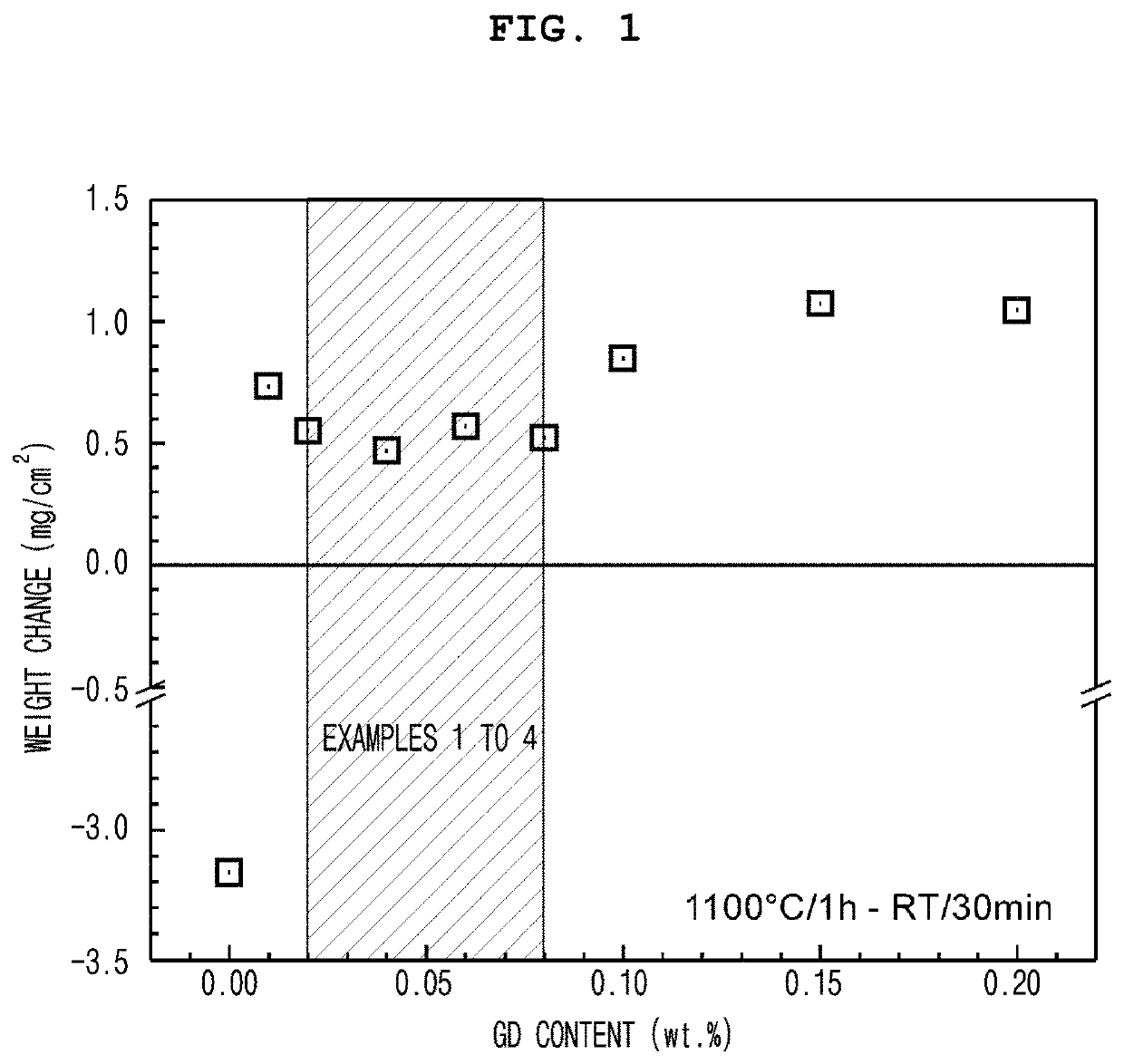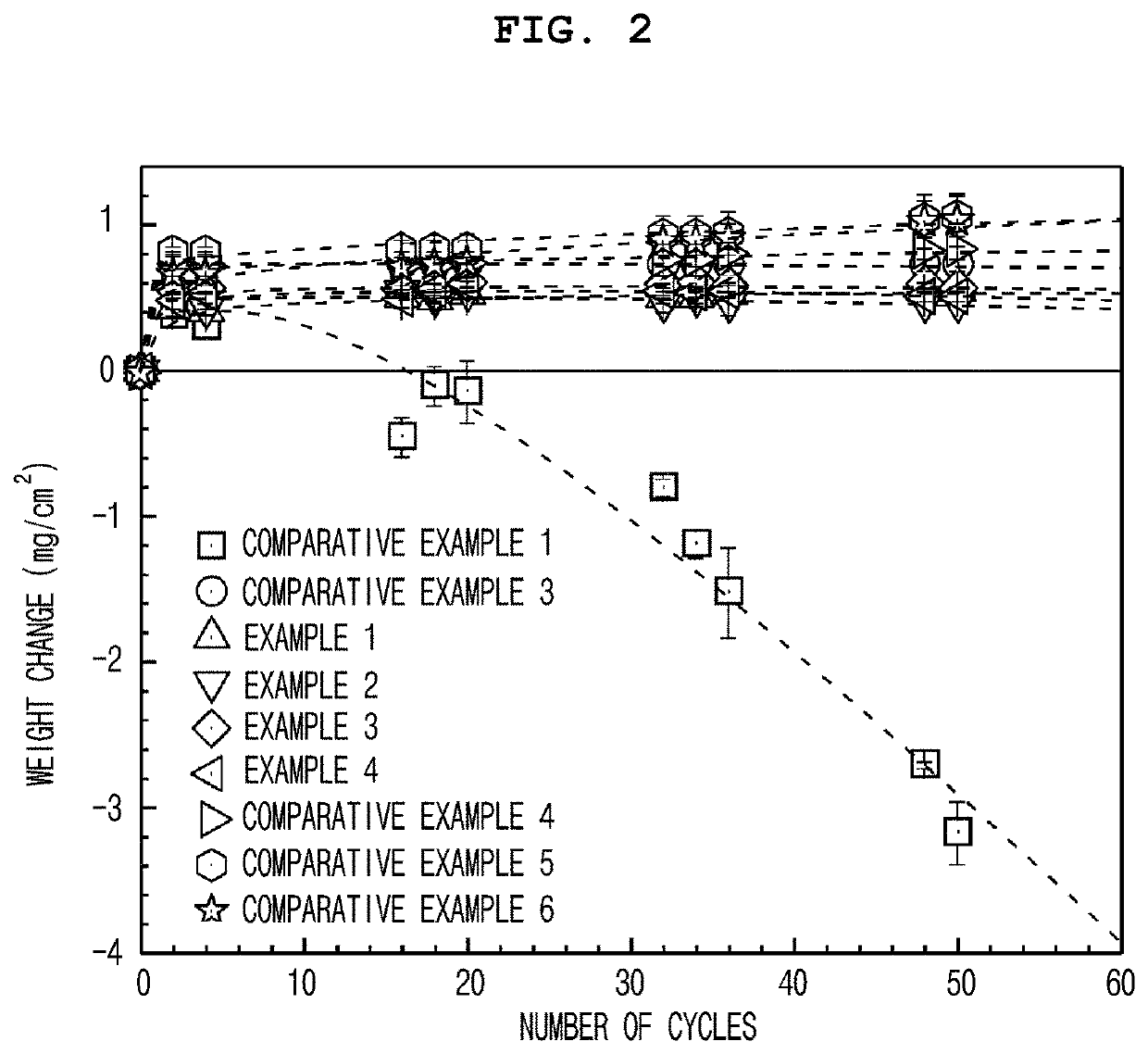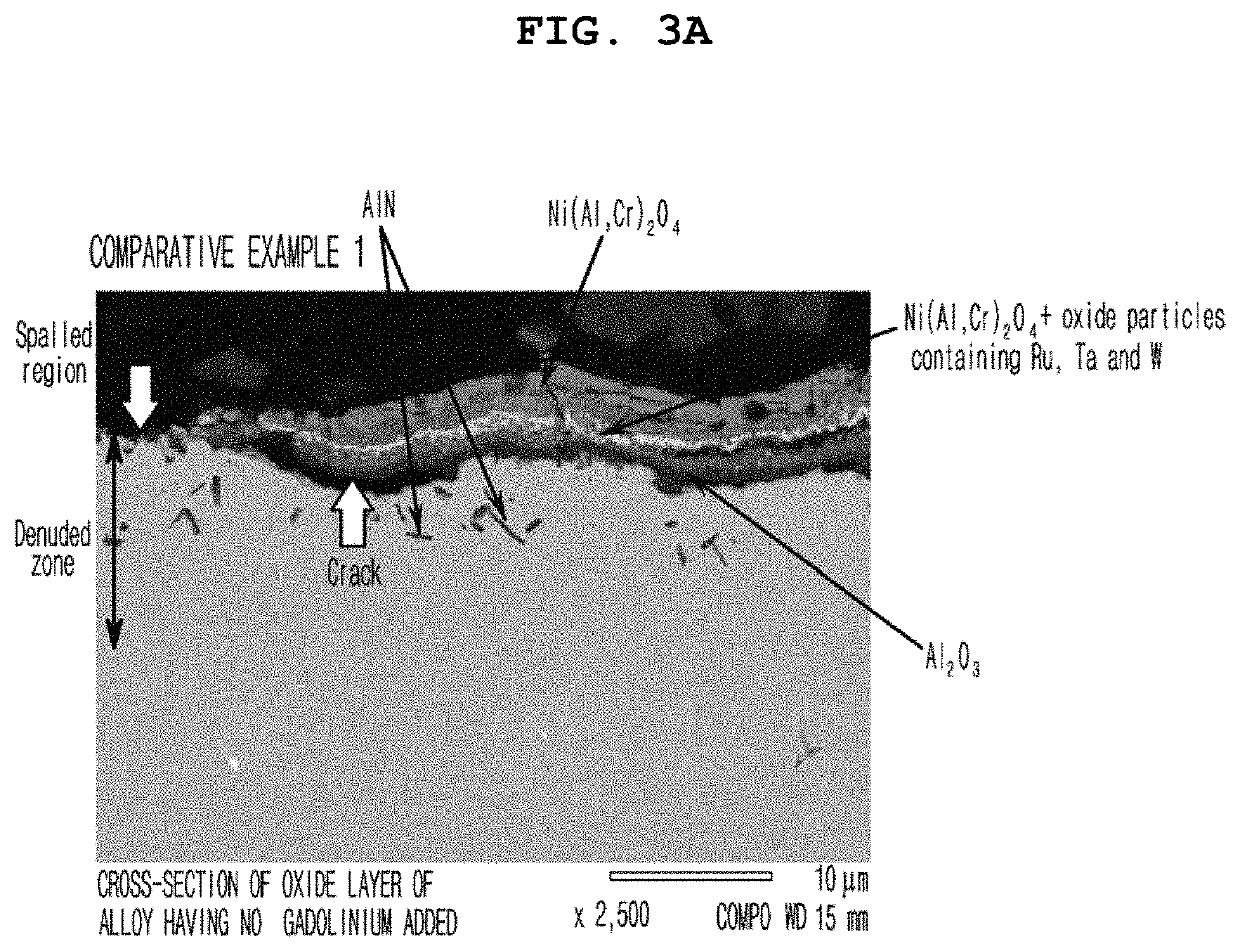Nickel-based heat-resistant material with improved cyclic oxidation properties and method of preparing the same
a heat-resistant material and cyclic oxidation technology, applied in the field ofnickel-based heat-resistant materials, can solve the problems of reducing high-temperature stability, unable to continuously use components for original purposes, and unable to achieve high-temperature stability, so as to suppress the formation of nitride, increase the stability of oxide layers, and reduce the effect of delamination
- Summary
- Abstract
- Description
- Claims
- Application Information
AI Technical Summary
Benefits of technology
Problems solved by technology
Method used
Image
Examples
experimental example 1
[0066]The nickel-based heat-resistant material of each of Examples 1 to 4 and Comparative Examples 3 to 6 was subjected to 50 cycles of repeated oxidation to measure a weight change after the cyclic oxidation, and the results are shown in FIG. 1. At this time, for one cycle, the oxidation test was performed at 1,100° C. for 1 hour, then the specimen was cooled to room temperature and maintained for 30 minutes after the oxidation. In the case of Examples 1 to 4, a relatively small weight change of about 0.5 mg / cm2 was observed, whereas in the case of Comparative Examples 3 to 6, it was confirmed that the weight change was large to about 0.7 to 1.2 mg / cm2 after 50 cycles of repeated oxidation tests. In addition, it was confirmed that the weight change was significantly reduced to about −3.2 mg / cm2 when gadolinium was not included in the alloy composition.
experimental example 2
[0067]The weight change during cyclic oxidation test of the nickel-based heat-resistant material of each of Examples 1 to 4 and Comparative Examples 1 and 3 to 6 was measured and the results are shown in FIG. 2. At this time, the oxidation test was performed at 1,100° C. for 1 hour for one cycle, then the specimen was cooled to room temperature and maintained for 30 minutes after the oxidation. The weight change of the specimen was measured by increasing the number of cycles. As shown in FIG. 2, in the case of Comparative Example 1, since gadolinium was not included, it was confirmed that the weight was rapidly decreased as the number of cycles increased.
experimental example 3
[0068]The SEM micrographs of the nickel-based heat-resistant material prepared according to each of Comparative Example 1 and Example 1 were taken to confirm the microstructural change after cyclic oxidation tests for 50 cycles, and the results were shown in FIGS. 3A to 3C. FIGS. 3A and 3B are SEM micrographs of the nickel-based heat-resistant material according to Comparative Example 1, in which a number of cracks and de-lamination of an oxide layer were observed, and also, many needle-shaped aluminum nitrides were observed to be famed due to the penetration of nitrogen into a base material through the cracks of the oxide layer. In addition, a thick oxide layer of several tens of μm was also observed to be formed, so that it was confirmed that the stability of the oxide layer was reduced.
[0069]On the other hand, FIG. 3C is a SEM micrograph of the nickel-based heat-resistant material according to Example 1 and it was confirmed that an overall thin and uniform oxide layer was formed ...
PUM
| Property | Measurement | Unit |
|---|---|---|
| temperature | aaaaa | aaaaa |
| temperature | aaaaa | aaaaa |
| size | aaaaa | aaaaa |
Abstract
Description
Claims
Application Information
 Login to View More
Login to View More - R&D
- Intellectual Property
- Life Sciences
- Materials
- Tech Scout
- Unparalleled Data Quality
- Higher Quality Content
- 60% Fewer Hallucinations
Browse by: Latest US Patents, China's latest patents, Technical Efficacy Thesaurus, Application Domain, Technology Topic, Popular Technical Reports.
© 2025 PatSnap. All rights reserved.Legal|Privacy policy|Modern Slavery Act Transparency Statement|Sitemap|About US| Contact US: help@patsnap.com



